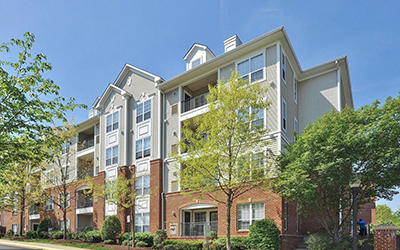
Home Building Geography Index: Smaller Markets See More Multifamily Construction Growth

(Photo credit: Mike Sorohan)
Multifamily construction fell in large metro core counties, but most other markets posted growth in the second quarter, according to the NAHB Home Building Geography Index for the second quarter.
“Multifamily market conditions remain stronger than expected, as single-family homeownership sits well out of reach for many households,” National Association of Home Builders Chief Economist Robert Dietz said. “Favorable construction dynamics in low-population density areas, such as lower regulation and land costs, have boosted multifamily construction in smaller markets while the high-density areas have seen construction declines.”
The HBGI measures building conditions across the country and uses county-level information about single- and multifamily permits to gauge housing construction growth in various urban and rural geographies.
For multifamily construction, most markets had growth in the second quarter, with small metro outlying counties recording a 22.1% increase. The high-density areas struggled, similar to the single-family sector, with large metro core counties down 12.3% in the second quarter, marking the ninth straight quarterly decline in these large counties.
The report said the trend of strong multifamily construction in counties with lower population densities has been a key factor for why multifamily sector has performed so well in 2025.
“Multifamily completions continue to report quarterly highs, as new units are reaching the market throughout the year,” the report said. “This should help to lower shelter inflation, which has been the major driver of overall inflation, and could potentially boost the probability of Federal Reserve rate cuts later this year.”
The second-quarter HBGI shows the following market shares in multifamily home building:
• 34.0% in large metro core counties
• 26.8% in large metro suburban counties
• 4.3% in large metro outlying counties
• 24.9% in small metro core counties
• 5.3% in small metro outlying areas
• 3.5% in micro counties
• 1.2% in non-metro/micro counties
